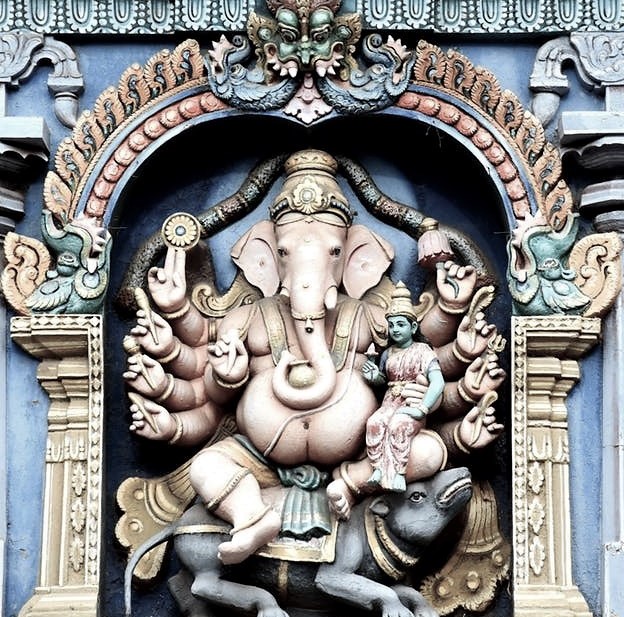- Special FeaturesFoundation Year1000 - 2000 years oldSthala TreeMantharamTheerthamBrahma TheerthamRathamArchitectureOther Speciality
- Sthala Puran
Lord Indira’s vehicle, the while elephant, Iravadham ignored a flower used in Shiva Pooja. It was cursed by Rishi Durvasa. It worshiped Lord Shiva for His grace.
Before returning to Indra Lok with his Master Indira, the elephant wanted to worship Lord Shiva. It created a place after its name, worshiped Muktheeswara. Even today, according to the documents of the temple, the place is known as Iravadhanallur.
It is noteworthy that the rays of the Sun fall on the Presiding Deity Muktheeswarar during the days from 10/11 to 22/23 in the month of March and again between September 18 to 30 and the sun rays remain for about 20 minutes each day.
As Sun God himself is worshipping the Lord with his rays submitted at His feet, there is no special shrine for the Navagrahas. It is also believed that a direct prayer to Lord Muktheeswara would relieve the devotee from the adverse effects of the planets.
There are Vinayaka shrines in the Northeast and Northwest. There are four varieties of Vilwa trees here called Nelli, Kiluvai, Mavilangai, and Vilwa.
Lord Muktheeswara relieves His devotees from affliction of adverse effects caused by the nine planets. Those who pray to the Lord and Goddess Maragathavalli attain salvation after life and peaceful life during lifetime.
The name Thilatharpanapuri comes from two words thil meaning Gingili and tharpana is the Hindu ritual of performing pithru karmas (ritual of paying tribute to ancestors) to ones ancestors. It is also known as Sethalapathy.
There are 7 sthalams for performing these rituals , namely, Varanasi, Rameswaram, Srivanchiyam, Thiruvenkadu, Gaya, Thiriveni Sangamam and Thilatharpanapuri.
Rama performed tharpanam for Dasaratha at various places by placing four pindams . However, to His dismay the pindams would turn into worms each time He performed the ritual.
A worried Rama prayed to Lord Shiva, who advised Rama to go to mantharavanam (mantharam is the flower of the coral tree, one of the five special trees of heaven) and offer His prayers to Him (Lord Shiva) there.
He was instructed to take bath in the Arasalar river near there, before performing the Pitru Tharpanam. Lord Rama did as instructed.
The four pindams that until now were turning into worms at other places, to His amazement, became four Lingams. Dasaratha Maharaja thus attained mukthi (salvation) and hence the name of the deity here is Muktheeswarar.
Since then, the locals believe that that performing the Pitru Tharpanam here absolves you of all your Pitru Sabams (ancestral curse) and Pitru Doshams (ancestral sins).
In the outer praharam (circumambulatory path) one can see the idol of Lord Rama performing the tharpanam and also the four lingams known as Pitru Lingams.
The shrine for Adhi Vinayakar (also known as Nara mukha vinayakar) is just outside the main temple.
One can see Lord Ganesha here with a human head and hence, He is Naramukha vinayakar.
The story of Lord Shiva beheading Naramukha Vinayaka who was created by Goddess Parvati and then replacing the head with an elephant head is well known.
Lord Shiva had instructed His troops to fetch the head of anyone found sleeping with his head placed towards North. They found this elephant sleeping with its head towards the North.
Lord Shiva named the boy Ganapati – meaning commander of His troops and granted a boon that Lord Ganapati shall be worshipped by everybody before starting anything new.
- Architecture
- Alankar of Deity
- Prayers and BenefitsSpecial Vratas and PrayersOfferings to DeityStotras and Mantras
- Festivals
- Sodasha Upcharas
- Prasadhas
- Social ActivitiesAnnadhanMarriageEar BoringHead ShaveDanaasEducation FacilitiesSocial DrivesOther Activities
- Arjita Seva
- Tags

